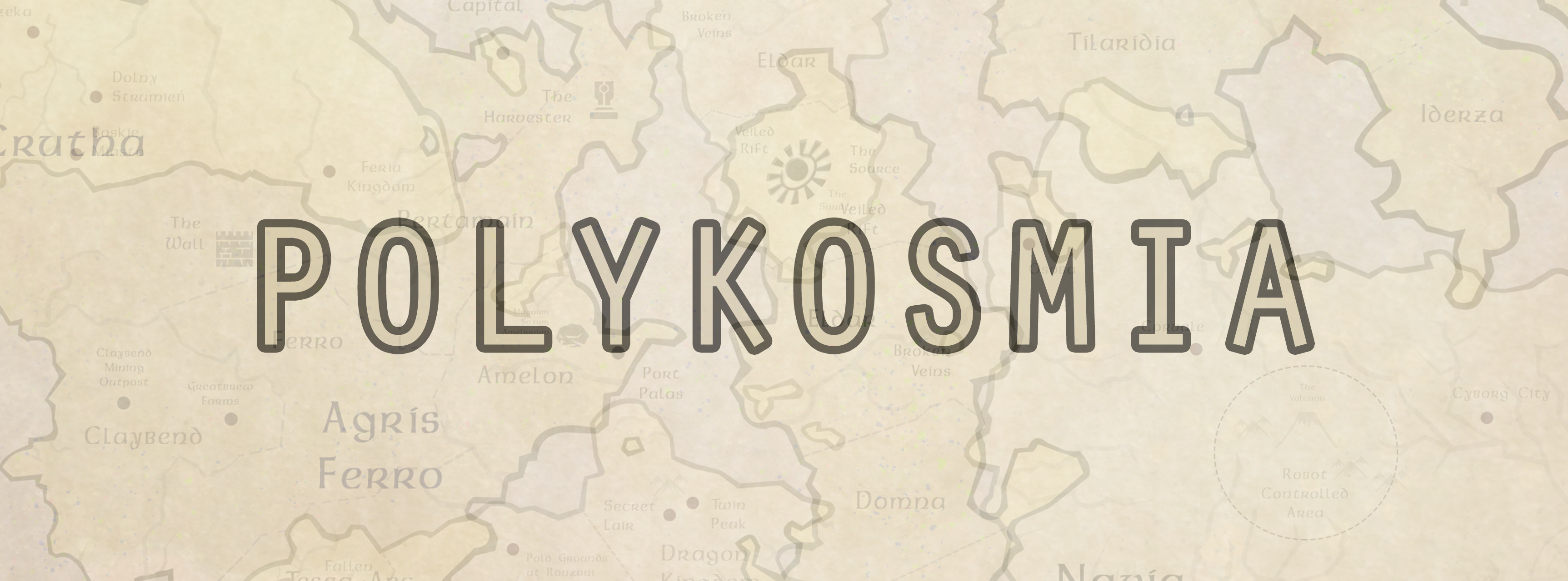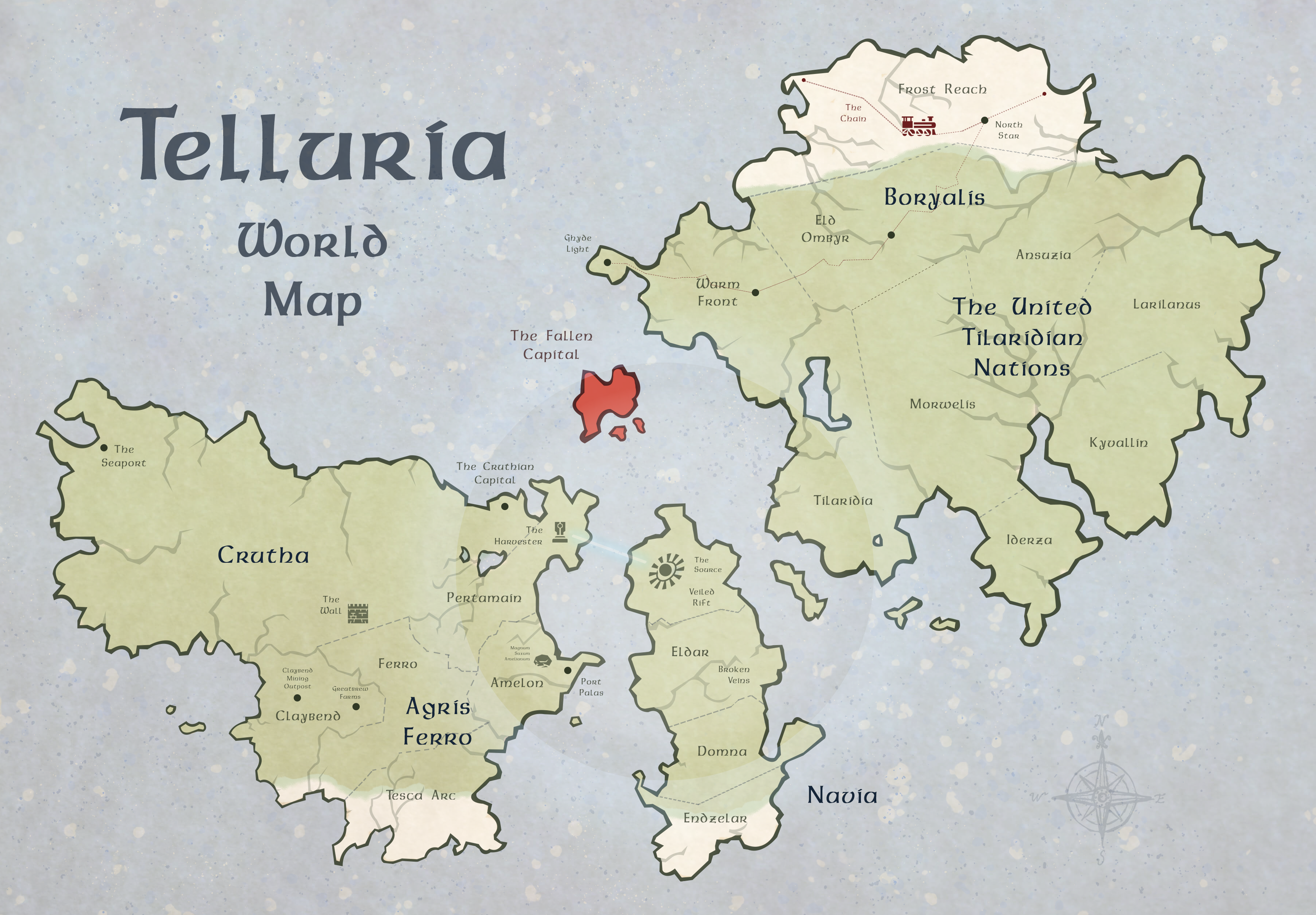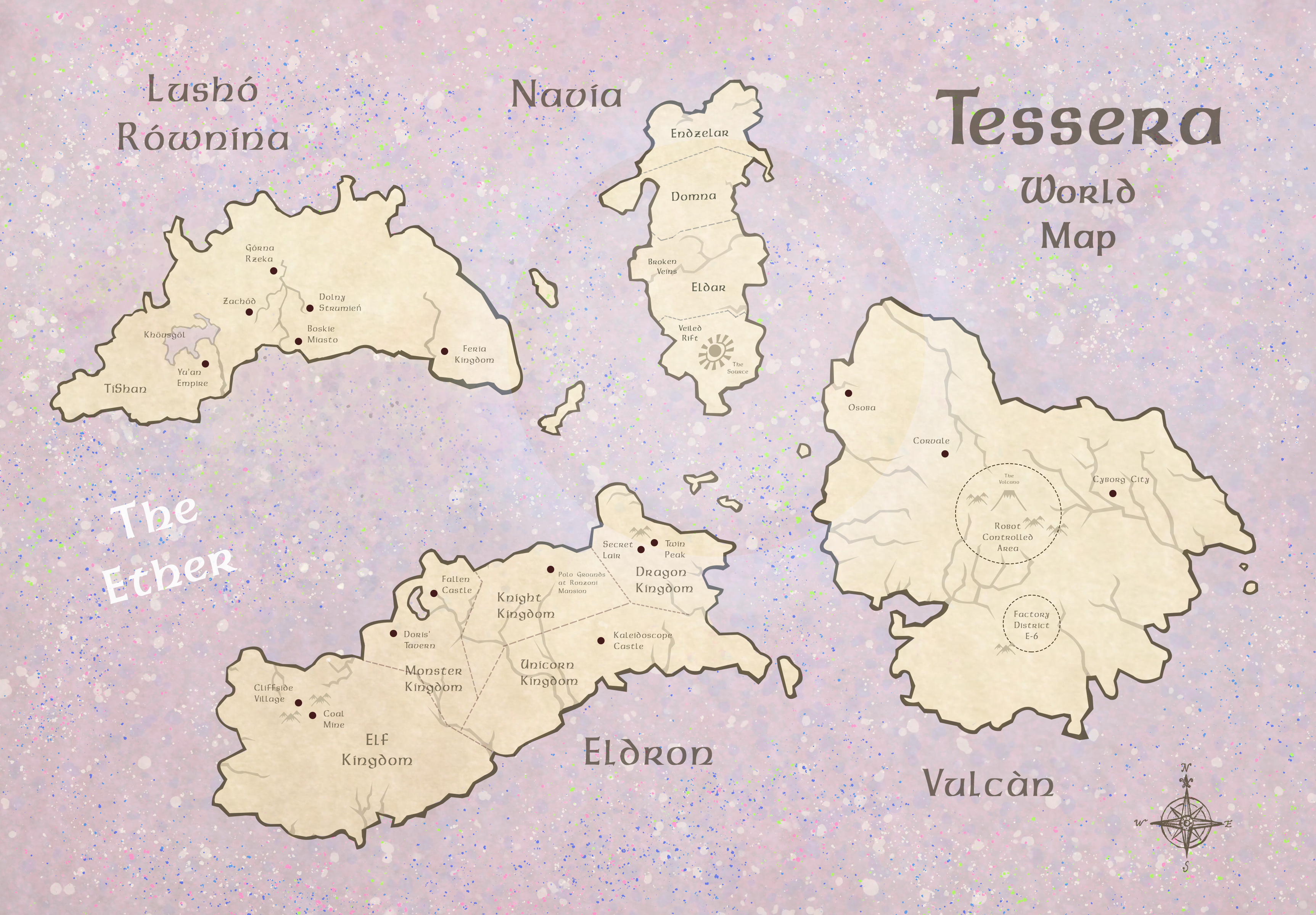
POLYKOSMIA (Greek: Πολυκοσμία ; poly- “many” -kosmia “world”) is a collaborative interactive storytelling project created by a team of University of Connecticut Digital Media and Design and UConn Neag School of Education students.
In early March 2020, two classes in two different UConn programs (Digital Media & Design and Educational Technology) were asked to help construct a shared storyworld. Because both classes emphasize the deep similarities of teaching, storytelling, and interactive design, the goal was to explore how different storyworlds are used to understand the real world.
Dozens of students across eight teams (many of whom had not met) collaborated to create independent realms on one of two planets (depending on which class/program they belonged to). The “Navia” Region was written by three UConn Digital Media & Design MFA students enrolled in both classes at the same time (which is why it appears on both maps).
Unbeknownst to the students, there was a backstory connecting the two worlds; this was a final surprise reveal, that the project was a real-time exploration of our collective adaptation to life during the COVID-19 pandemic (including the virus itself, adaptation to distance teaching/learning, changing complex interlocking social and cultural systems, etc.).
The POLYKOSMIA World Anvil wiki serves as a catalog of the project development process and final product, a backdrop to dozens of new stories written by dozens of students in the form of games, illustrations, lesson plans, storyboards, encyclopedias, and more. Some examples include:
- Northbound (Interactive Story) – Devin Quinn, Spring 2020
- The Children of Queen Simone (Historical Account) – Joshua Hirshfield, Spring 2020
- The Hunt (Graphic Novel) – Mackenzie Fox, Spring 2020
Please feel free to use this as an example of how teachers, scientists, researchers, game designers, and others can teach and learn using the combined power of technology, imagination, and play. Special thanks to Trent Hergenrader, John Truby, Crash Course, Lindsey Ellis, Sage Hayden, and all the other creative forces whose work formed the basis of the group’s discussions.
It all began with a simple premise: a mysterious energy well-spring called The Source.
The Source, students were told, had shaped the development of life and growth in the realm of Telluria (written by UConn DMD3522: Interactive Storytelling) for centuries. Over time, it emitted an increasingly powerful electromagnetic-like force (referred to as Magick / Power) until, three years prior to present, an enormous energy spike expanded The Source’s reach and collapsed multiple dimensions of reality into a new plane of existence, Tessera (written by EPSY5266: Instructional Media & Game Design), containing a variety of continents torn from separate, unique storyworlds (i.e., The Convergence). Students formed groups to develop individual regions of maps, brainstormed how The Source (as well as the varied storyworld elements created by other student groups) might affect different peoples, economies, governmental structures, and sociocultural systems (e.g., education, religion, science, military), and constructed wiki entries explaining the histories of their respective regions in Telluria and Tessera.
Importantly, the 300-year timeline, energy spike, The Convergence, and other foundational components of the project were designed to serve as a living metaphor.
The Source represents humanity’s technological advancement over the last three centuries, spiking in the last decade as social media and mobile devices have made it possible to communicate and understand peoples and cultures from every part of the world. The Bloody Boils (which plagued Telluria for a century) serves as a lens to consider the long-term consequences of real world current events like COVID-19. Likewise, the Tellurian continent of Navia, written by three UConn Master of Fine Arts students enrolled in both EPSY5266 and DMD3522, connects the storyworlds of Telluria and Tessera as an explicit commentary on how we—artists, teachers, instructional designers, researchers, scientists, and more—have maintained a sense of community through uncertain times using the combined powers of technology and imagination.


